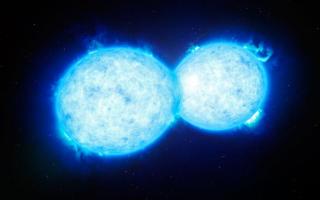
An international group of astronomers has found an overcontact binary system which is the most massive and hottest known so far, using the VLT (Very Large Telescope) of ESO (European Southern Observatory) in Chile. The system, named VFTS 352 is in the Tarantula Nebula.
Advertised on



